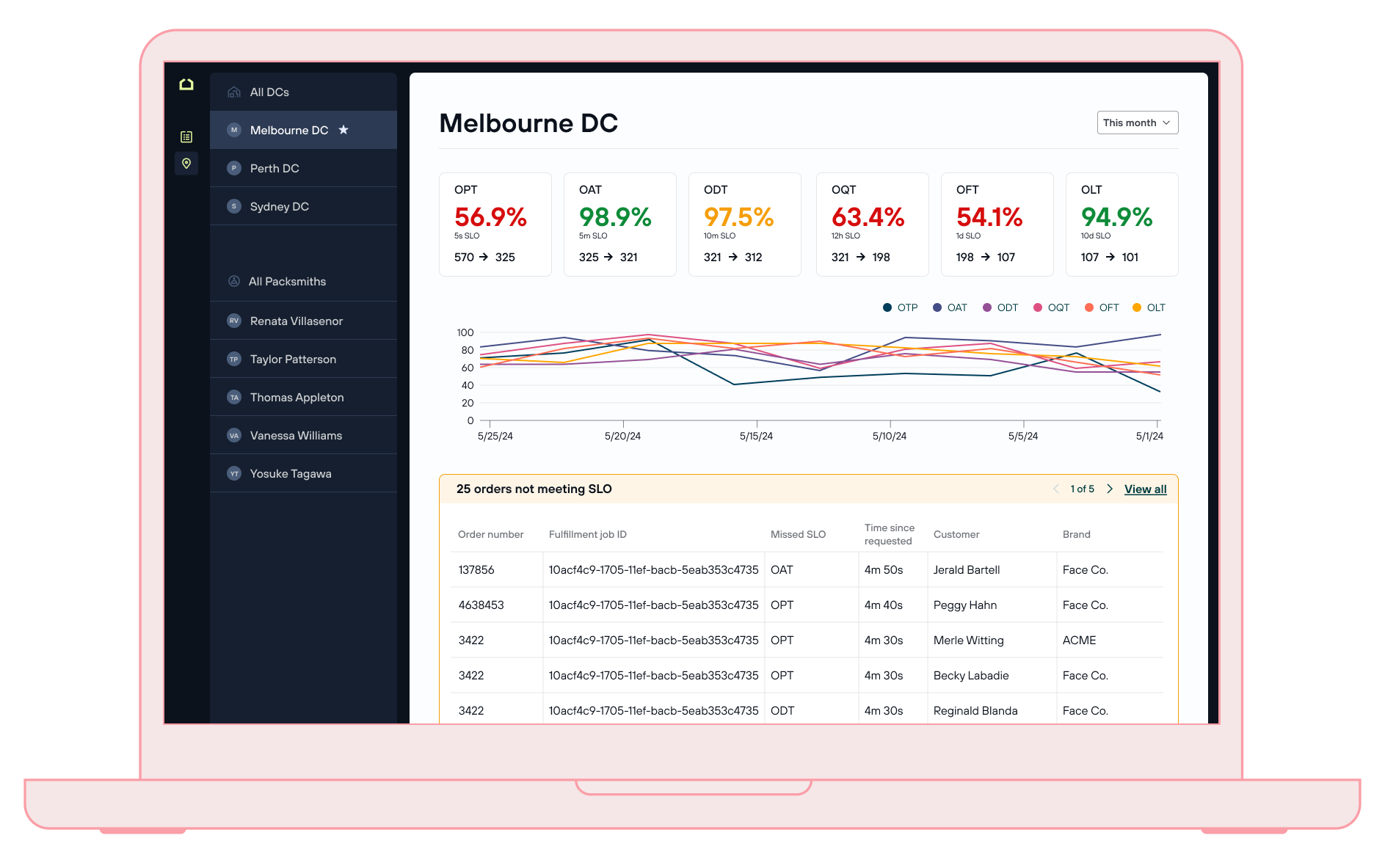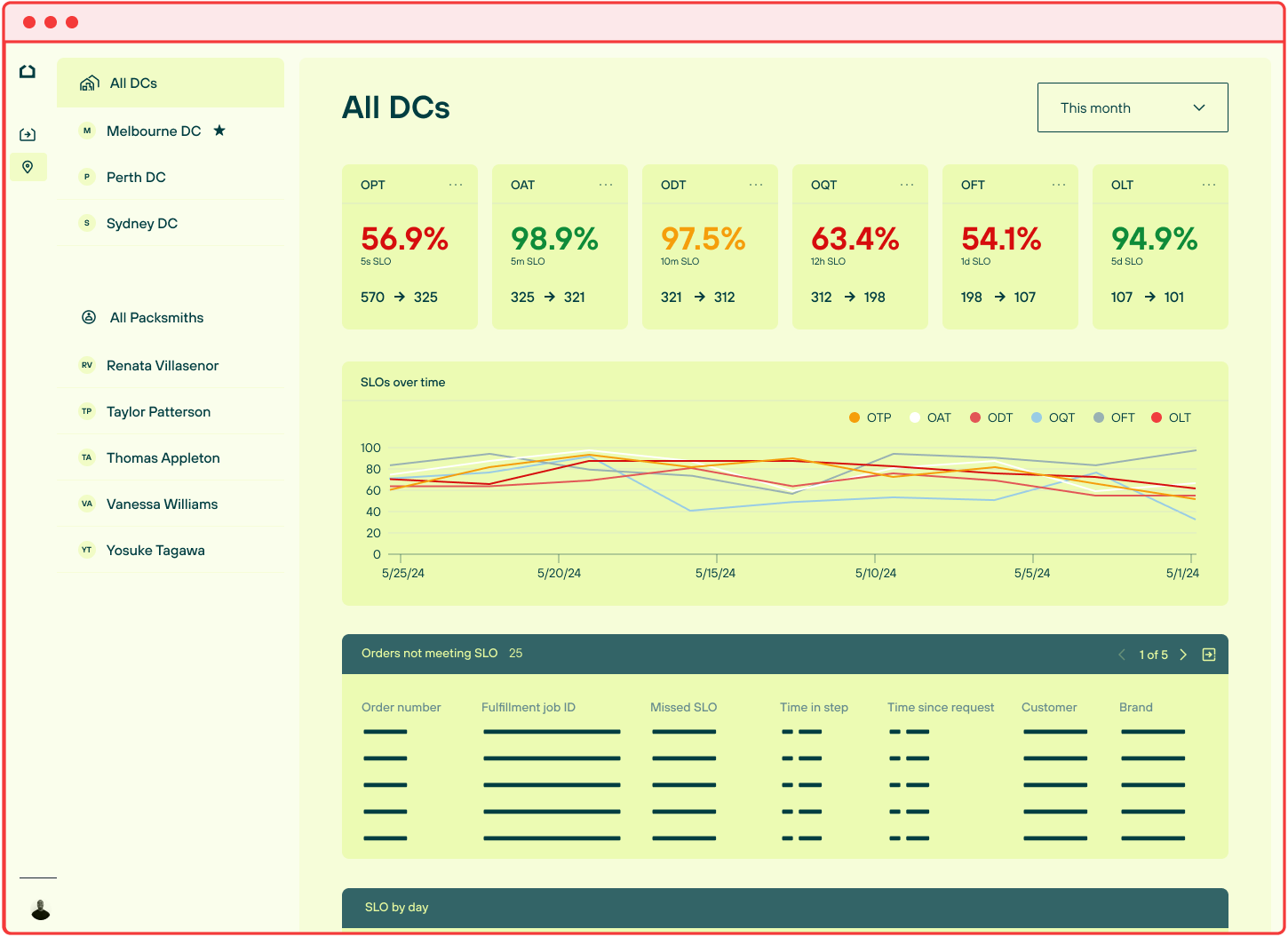More than just a fulfillment tool
Discovering systemic challenges in logistics
and fulfillment
Joining this remote startup offered a novel work experience: a curious mix of constant Slack messages, virtual meetings, surprisingly empty calendars, and yet a driving sense of urgency, which was a complete shift from my previous jobs. My initial project brief was simple - design an internal tool for our Operations and Warehouse teams to manage order fulfillment, track performance, and troubleshoot errors. I quickly learned that ‘simple’ in a startup translates to “complex, rapidly evolving, and entirely on your shoulders.’ Having spent years in structured, corporate design, I was now the sole designer, researcher, and strategist - a daunting prospect that triggered a surge of imposter syndrome.
My first challenge was understanding the world of logistics. I immersed myself in interviews with the warehouse team, and others, observing their workflows and dissecting the existing (and frankly, frustrating) third-party tool the team was currently using. I kept a running log of new terms and acronyms. It was a baptism by fire, but it provided valuable insights. I wasn’t just designing a tool; I was learning a brand new industry.
As I dug into the user flows, a bigger issue emerged - fragmentation. The team was frequently needing to reference different tools in order to piece together the puzzle of an order’s journey from inception to fulfillment, and potential troubleshooting much later down the road. My ‘systems brain’ kicked into high gear. I began sketching out a unified view, visualizing the process as a flow. Not only that, but our internal tools weren’t working together, and there were glaring red flags with access to various tools. I wasn’t just designing a tool; I was building an interconnected ecosystem.
I remember the first time reviewing the complete set of wireframes with our Operations manager. The initial nervousness was replaced with a sense of accomplishment as their eyes lit up. I had translated their complex workflow, and their ideas, into a clear, intuitive interface. This moment was a turning point, a tangible affirmation that I could navigate the uncharted territory of startup design.
Wireframes
The final version of the wireframes, created with a stylized set of components.
The first release of the tool was met with immediate enthusiasm. Tasks were completed faster, packing orders became more efficient, and the team integrated the tool seamlessly into their workflow. The team’s feedback, more than any other metric, validated the impact of the work.
But the journey didn’t end there.
Final visual design
The final design references and expands the existing patterns and components in our customer-facing tool libraries.
As the tool was used, we identified areas for further improvement. The performance data, while helpful, needed to be more granular. The order details page, while functional, could be more informative. I worked closely with the team to implement iterative changes, and continue to work on a larger scale update. We were able to use some of the learnings from the internal tool to improve the customer-facing tools we already had. I wasn’t just designing a tool; I was building a system.
This project was a masterclass in startup design. I learned to thrive in ambiguity, to iterate rapidly, and to prioritize impact over perfection. I discovered the power of systems thinking, not just as a design principle, but as a way to solve complex problems. Most importantly, I learned to silence the inner critic and trust my abilities. While I sometimes missed the structured resources of larger companies, the autonomy and the direct impact of my work were immensely rewarding.
Building this tool wasn’t just about creating a product; it was about building bridges - bridging the gap of fragmented data, bridging the gap between my past experience and my present reality, and bridging the gap between my initial doubts and my newfound confidence. In the end it wasn’t just a tool I built, it was a foundation for a more interconnected and efficient future for this logistics startup.






